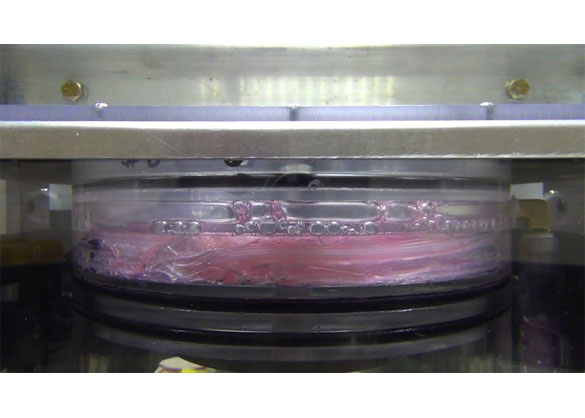Evaporative Heat Transfer Mechanisms within a Heat Melt Compactor (EHeM HMC) Experiment
PI: Eric Golliher, NASA/Glenn Research Center, Greg Pace (Co-I), NASA/Ames Research Center
PI: Eric Golliher, NASA/Glenn Research Center, Greg Pace (Co-I), NASA/Ames Research Center

- TA06 Human Health, Life Support and Habitation Systems
- TA14 Thermal Management Systems
The evaporative heat transfer mechanisms for fluids are entirely different in a microgravity environment when compared to here on earth. During the compaction process, the liquid will be free to move in any direction and not restrained by gravity. During the heating process, the hot vapors and hot vapor bubbles will not rise, as would normally happen in a 1-g environment. The movement of vapor bubbles may therefore entrain the liquid easily. The assurance that only vapor exits the HMC is a possible problem in microgravity. Another possible problem is the ability to predict the total time needed to evaporate all the available water. A better understanding of the evaporation process may help to validate analytical models and therefore help to predict the total time to recover the desired water.
The proposed payload will be at TRL 4 prior to the flights. After the low gravity flight testing, the TRL for the HMC will be partially at TRL 5, since this is only one component of the HMC system. This will be the first-ever testing of this process in low gravity, so this flight will result in a major leap in TRL for this technology.
The specific benefit of the proposed activity to a NASA mission, program, or project is the ability to design and develop a critical piece of hardware for life support and exploration of our solar system, the Heat Melt Compactor. This hardware will be available for all future Exploration missions and may be useful for ISS as well. Basic knowledge gained from low gravity flights may also be used to develop other types of evaporation-based hardware, such as Brine-dewatering and Laundry Systems.
The time available on a low gravity flight will not allow complete testing of the entire evaporative heat cycle. However, part of the process can be investigated. For the first flight in October 2012, water expulsion during non-heating compaction was investigated. During future flights, other parts of the evaporative process will be investigated, such as the beginning of the evaporation process that occurs after the compaction process. Data products include video data of the water expulsion process as well as video data and temperature data for the evaporation process. Monitoring the temperature-versus-time history of heating response will show a difference between low gravity and normal gravity.
The test rig consists of the following basic components: 1) a 23 cm diameter acrylic cylindrical section filled with various compositions of water, plastic bags, and paper towels, 2) a power screw mechanism to drive the piston with an ordinary hand drill, and 3) HD camcorders to provide video data of the process. Future flights may include temperature control instrumentation as well as hard-wired safety devices to ensure no possibility of over-temperature, and a Data Acquisition and Control (DAQ) system that will monitor temperatures in the transient mode.
Technology Details
-
Selection DateAFO3 (Mar 2012)
-
Program StatusActive
- 2 Parabolic
Development Team
-
PIEric Golliher
-
PI Organization
-
Co-IGreg Pace
-
Co-I Organization
-
SponsorNASA

